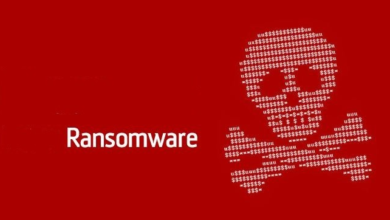Ultimate Guide to OWASP Top 10 2024: What You Need to Know

Introduction to OWASP and Its Mission
In an era where cyber threats lurk at every corner, safeguarding your digital presence is paramount. This is where OWASP steps in—a beacon of hope and security in the vast sea of the internet. But what exactly is OWASP? Imagine a fortress, unyielding and impenetrable, dedicated to shielding web applications from the relentless onslaught of cyber attacks. The OWASP (Open Web Application Security Project) is more than just an organization; it is a global community committed to the ethos of transparency and collaboration, tirelessly working to fortify our digital world.
Their mission? To enhance software security and provide invaluable resources such as the renowned OWASP Top 10 2024—a meticulously curated list spotlighting the most critical web application security risks. Dive into the world of OWASP, and discover how it’s reshaping the cybersecurity landscape, one vulnerability at a time.
Table of Contents
Understanding the OWASP Top 10: A Brief Overview
Navigating the intricate web of cybersecurity can be daunting, but the OWASP Top 10 2024 serves as a guiding light. This pivotal resource, curated by the Open Web Application Security Project (OWASP), identifies the most pressing security risks facing web applications today. From seasoned professionals to fledgling developers, understanding this list is crucial for anyone involved in safeguarding digital landscapes.
The OWASP Top 10 2024 is not just a catalog of threats; it’s a comprehensive framework for fortifying web applications. This year’s list underscores new vulnerabilities while reinforcing perennial threats. For instance, injection attacks continue to plague systems, exploiting flaws in data handling. Similarly, cryptographic failures highlight the necessity for robust encryption practices to protect sensitive data.
Emerging on the list are concerns like insecure design, a reminder that security must be integrated from the ground up. Additionally, software and data integrity failures shed light on the risks posed by unverified updates and changes. These insights empower organizations to prioritize their security efforts effectively.
Why the 2024 Update Matters: Key Changes and Implications
The OWASP Top 10 2024 update is a pivotal moment in the cybersecurity realm, bringing essential changes that echo across the industry. This update isn’t just a routine revision; it’s a comprehensive overhaul reflecting the evolving landscape of web security. One key change is the heightened focus on insecure design, emphasizing the importance of integrating security measures from the inception of development projects. Additionally, the inclusion of software and data integrity failures addresses the growing threats posed by compromised updates and unverified changes.
These updates underscore a crucial shift: security is no longer an afterthought but a fundamental aspect of development. For businesses and developers alike, understanding these changes is vital. The OWASP Top 10 2024 provides a roadmap for fortifying applications against sophisticated threats, ensuring robust defense mechanisms are in place. Embracing these updates means staying ahead in the ever-evolving battle against cyber threats.
What Makes the OWASP Top 10 2024 Different?
The OWASP Top 10 2024 stands out with its refreshed perspective on cybersecurity, addressing modern threats with unprecedented precision. Unlike previous iterations, this update introduces insecure design as a key focus, highlighting the necessity for security integration from the very start of the development process. Another significant addition is the emphasis on software and data integrity failures, which tackles the risks associated with unverified updates and modifications.
Furthermore, the OWASP Top 10 2024 prioritizes cryptographic failures, underscoring the importance of robust encryption to protect sensitive data. This comprehensive approach ensures that organizations can anticipate and mitigate evolving threats more effectively. By addressing both old and new vulnerabilities, the OWASP Top 10 2024 serves as an essential guide for creating resilient, secure web applications in today’s digital age.
The Impact of Emerging Technologies on OWASP Top 10
The rapid evolution of technology significantly influences the OWASP Top 10 2024, reshaping the landscape of web security. As emerging technologies like AI, IoT, and blockchain integrate into our digital ecosystem, they introduce novel vulnerabilities that demand attention. The OWASP Top 10 2024 reflects this dynamic shift, prioritizing threats such as insecure design and software and data integrity failures. These emerging technologies often lack mature security frameworks, making them prime targets for cyber attacks.
Moreover, the proliferation of interconnected devices amplifies the potential for exploitation, underscoring the need for robust cryptographic practices. By addressing these contemporary challenges, the OWASP Top 10 2024 provides a vital roadmap for navigating the complexities of modern cybersecurity. Understanding and mitigating these risks is crucial for developers and organizations aiming to safeguard their digital assets in an increasingly interconnected world.
In-Depth Look at Each OWASP Top 10 2024 Threat
1- Injection Attacks: Recognizing and Mitigating Risks
Injection attacks remain a formidable threat in the realm of cybersecurity, persistently ranking high in the OWASP Top 10 2024. These attacks exploit vulnerabilities in web applications, allowing malicious actors to inject harmful code into systems. The consequences can be devastating, from unauthorized data access to complete system compromise.
Recognizing the signs of an injection attack is crucial. Symptoms include unusual database behavior, unexpected application errors, and unauthorized data manipulation. Attackers often use SQL, LDAP, and other forms of code injection to breach defenses.
Mitigating these risks requires a multi-faceted approach. Implementing prepared statements and parameterized queries is essential, as they prevent attackers from manipulating query structure. Regularly updating and patching software also reduces vulnerability windows. Additionally, input validation ensures only properly formatted data enters the system, thwarting potential exploits.
Security education is another vital component. Training developers to write secure code and understand common vulnerabilities fosters a proactive defense mindset. By staying vigilant and implementing robust security measures, organizations can effectively combat injection attacks and protect their digital assets from evolving threats. The OWASP Top 10 2024 serves as a crucial guide, highlighting the importance of addressing these persistent risks in today’s cybersecurity landscape.
2- Broken Authentication: Protecting Your User Credentials
In the ever-evolving digital landscape, broken authentication continues to be a critical concern, prominently featured in the OWASP Top 10 2024. This vulnerability arises when authentication mechanisms are inadequately implemented, allowing attackers to compromise user credentials and gain unauthorized access.
To protect against broken authentication, implementing multi-factor authentication (MFA) is essential. By requiring multiple forms of verification, MFA significantly reduces the risk of unauthorized access. Additionally, enforcing strong password policies ensures that users create complex, unique passwords that are harder for attackers to crack.
Regularly updating and patching authentication systems is another crucial step. Outdated software can have vulnerabilities that are easily exploitable. Moreover, monitoring login attempts and employing rate limiting can help detect and prevent brute force attacks.
Another effective strategy is to use secure, encrypted communication channels. This ensures that credentials are protected during transmission, safeguarding them from interception.
Education also plays a pivotal role. Teaching users about the importance of secure practices, such as avoiding reused passwords and recognizing phishing attempts, strengthens overall security posture. By adhering to these best practices and staying informed about the OWASP Top 10 2024, organizations can effectively mitigate the risks associated with broken authentication and protect their user credentials from malicious threats.
3- Sensitive Data Exposure: Safeguarding Personal Information
In our digitally driven world, sensitive data exposure stands as a formidable threat, prominently highlighted in the OWASP Top 10 2024. This risk emerges when personal information, such as financial details or health records, is inadequately protected, leaving it vulnerable to unauthorized access.
To safeguard personal information, encryption is paramount. Encrypting data both at rest and in transit ensures that even if data is intercepted, it remains unintelligible to malicious actors. Implementing robust access controls also limits data exposure, ensuring only authorized personnel can access sensitive information.
Regular security assessments and audits are essential. These practices help identify potential vulnerabilities and ensure compliance with data protection regulations. Additionally, fostering a culture of security awareness among employees can prevent inadvertent data breaches caused by human error.
By adopting these measures, organizations can significantly mitigate the risk of sensitive data exposure. Following the guidelines set forth in the OWASP Top 10 2024, they can better protect personal information and maintain the trust of their users in an increasingly perilous digital landscape.
4- XML External Entities (XXE): New Threats and Defenses
XML External Entities (XXE) attacks pose significant threats in today’s cybersecurity landscape, warranting their inclusion in the OWASP Top 10 2024. These attacks exploit vulnerabilities in XML parsers, enabling malicious actors to access sensitive data, execute code remotely, or launch denial-of-service attacks.
To defend against XXE threats, robust measures are essential. Disabling external entity parsing in XML processors is a fundamental step. By configuring parsers to reject external entities, the attack surface is significantly reduced. Additionally, implementing input validation and employing secure libraries for XML processing can further mitigate risks.
Regular security training for developers ensures they are aware of these vulnerabilities and equipped to write secure code. Conducting comprehensive security audits and employing automated tools to detect XXE vulnerabilities also bolster defenses.
5- Broken Access Control: Ensuring Proper Permissions
Broken access control remains a critical issue in web security, underscored in the OWASP Top 10 2024. This vulnerability occurs when applications fail to enforce proper permissions, allowing unauthorized users to access restricted resources. The consequences can be dire, including data breaches and unauthorized modifications.
To ensure proper permissions, implementing a principle of least privilege is essential. This approach grants users the minimum access necessary to perform their duties, reducing the risk of exploitation. Regularly reviewing and updating access controls helps maintain their effectiveness, adapting to changes in roles and responsibilities.
Employing robust authentication mechanisms, such as multi-factor authentication (MFA), adds an additional layer of security. Additionally, using secure coding practices and regularly auditing access control policies can prevent vulnerabilities from slipping through the cracks.
6- Security Misconfigurations: Common Pitfalls and Fixes
Security misconfigurations represent a prevalent threat in the digital realm, a fact underscored by their inclusion in the OWASP Top 10 2024. These misconfigurations often stem from oversight or negligence in configuring security settings, leaving systems vulnerable to exploitation.
Common pitfalls include default configurations, unnecessary features enabled, and inadequate access controls. Attackers exploit these misconfigurations to gain unauthorized access, exfiltrate data, or execute malicious code.
Addressing security misconfigurations requires a proactive approach. Conducting regular audits to identify and rectify misconfigurations is paramount. Implementing automated tools to enforce secure configurations and adopting industry best practices further fortifies defenses.
Moreover, staying informed about emerging threats and updating configurations accordingly ensures ongoing protection. By prioritizing security hygiene and promptly addressing misconfigurations, organizations can bolster their resilience against cyber threats highlighted in the OWASP Top 10 2024. This proactive stance is key to maintaining a robust security posture in today’s digital landscape.
7- Cross-Site Scripting (XSS): Detecting and Preventing Attacks
Cross-Site Scripting (XSS) poses a significant threat to web security, earning its place in the OWASP Top 10 2024. This vulnerability allows attackers to inject malicious scripts into web pages viewed by other users. The consequences can range from stealing sensitive information to hijacking user sessions.
Detecting and preventing XSS attacks requires a multi-layered approach. Input validation is crucial, ensuring that user-supplied data is properly sanitized before being displayed. Content security policies (CSP) can also mitigate risks by restricting the sources from which content can be loaded.
Regular security testing, including dynamic and static analysis, helps identify and remediate vulnerabilities. Additionally, staying updated on emerging attack techniques and implementing security headers further fortifies defenses.
By implementing these measures, organizations can significantly reduce the risk of XSS attacks and protect their users’ data. Prioritizing security measures outlined in the OWASP Top 10 2024 is essential to maintaining a secure web environment in the face of evolving threats.
8- Insecure Deserialization: Understanding and Addressing the Dangers
Insecure deserialization is a critical vulnerability that plagues modern software systems, making its mark in the OWASP Top 10 2024. This flaw arises when serialized data is not properly validated during deserialization, opening the door for malicious actors to execute arbitrary code or perform unauthorized actions.
Understanding the dangers of insecure deserialization is paramount for organizations striving to maintain robust security postures. Exploiting this vulnerability can lead to a cascade of detrimental consequences, including data breaches and system compromise.
Addressing these dangers requires a multifaceted approach. Implementing strict input validation and integrity checks during deserialization can help mitigate risks. Additionally, employing secure coding practices and regularly updating software components can further fortify defenses against insecure deserialization attacks.
9- Using Components with Known Vulnerabilities: Best Practices
When it comes to software development, using components with known vulnerabilities can be a ticking time bomb, as highlighted in the OWASP Top 10 2024. These vulnerabilities can lurk within third-party libraries, frameworks, or plugins, leaving applications susceptible to exploitation by cybercriminals.
To mitigate these risks, adopting best practices is essential. Regularly updating components to their latest versions helps patch known vulnerabilities and strengthens the security posture of the application. Implementing automated tools for vulnerability scanning can aid in identifying and addressing weaknesses proactively.
Maintaining an inventory of all components used in the application facilitates easier tracking and monitoring for potential vulnerabilities. Engaging in community forums or subscribing to security mailing lists can also provide valuable insights into emerging threats and patches.
10- Insufficient Logging and Monitoring: Enhancing Visibility and Response
Insufficient logging and monitoring are often the Achilles’ heel of cybersecurity defenses, a stark reality emphasized in the OWASP Top 10 2024. This vulnerability arises when systems fail to adequately record and analyze security events, leaving organizations blind to potential threats and breaches.
Enhancing visibility and response capabilities is paramount in addressing this weakness. Implementing robust logging mechanisms allows organizations to capture crucial data about system activities and user interactions. Pairing this with proactive monitoring enables real-time detection of suspicious behavior or anomalies.
Investing in advanced analytics and machine learning technologies can further empower organizations to identify and prioritize security incidents effectively. Additionally, establishing clear incident response protocols and conducting regular drills ensures swift and coordinated action when breaches occur.
Practical Steps to Implement OWASP Top 10 2024 Recommendations

Building a Robust Security Framework
In today’s dynamic digital landscape, building a robust security framework is imperative for organizations to fortify their defenses against evolving threats. A comprehensive approach begins with a thorough understanding of the OWASP Top 10 2024, which highlights the most critical security risks facing web applications.
To construct an effective security framework, organizations must first conduct a comprehensive risk assessment to identify vulnerabilities and assess potential threats. This involves implementing stringent access controls, robust encryption protocols, and continuous monitoring systems to detect and respond to security incidents in real-time.
Regular security audits and penetration testing are essential to evaluate the effectiveness of existing security measures and identify areas for improvement. By fostering a culture of security awareness and providing ongoing training to employees, organizations can further strengthen their security posture and mitigate risks effectively. Ultimately, building a robust security framework requires a proactive and multi-faceted approach to safeguard against potential cyber threats.
Tools and Resources for Continuous Security Improvement
In the realm of cybersecurity, continuous security improvement is not just a goal but a necessity to stay ahead of evolving threats. Fortunately, a plethora of tools and resources are available to assist organizations in this endeavor. These resources range from automated vulnerability scanners that can detect weaknesses in web applications to threat intelligence platforms that provide real-time insights into emerging cyber threats.
One invaluable resource is the OWASP Top 10 2024, which outlines the most critical security risks facing web applications. By aligning security practices with the recommendations of the OWASP Top 10 2024, organizations can prioritize their efforts effectively and address the most pressing vulnerabilities.
Additionally, security frameworks such as the NIST Cybersecurity Framework offer guidance on implementing robust security controls and managing cybersecurity risk. Continuous monitoring solutions, SIEM (Security Information and Event Management) platforms, and threat hunting tools further enhance an organization’s ability to detect and respond to security incidents promptly.
Case Studies: Real-World Applications and Lessons Learned
Case studies provide invaluable insights into real-world applications of cybersecurity principles, offering lessons learned that can inform and enhance organizational security practices. By examining past incidents and breaches, organizations can gain a deeper understanding of the OWASP Top 10 2024 vulnerabilities and their potential impact.
For example, a case study on a data breach resulting from insecure deserialization can highlight the importance of validating user input to prevent code execution vulnerabilities. Similarly, a case study on broken authentication may underscore the significance of implementing multi-factor authentication and strong password policies.
These real-world examples not only illustrate the consequences of security lapses but also demonstrate effective mitigation strategies. By studying such case studies, organizations can proactively identify and address vulnerabilities in their own systems, ultimately strengthening their overall security posture.
The Future of OWASP and Cybersecurity Trends
As we peer into the horizon of cybersecurity, the Future of OWASP appears poised to continue its pivotal role in shaping industry standards and best practices. With the ever-evolving threat landscape, the OWASP Top 10 2024 is anticipated to adapt, reflecting emerging vulnerabilities and attack vectors.
One trend on the horizon is the rise of AI-driven security solutions, which promise to enhance threat detection and response capabilities. Additionally, the proliferation of IoT devices will necessitate new approaches to securing interconnected ecosystems, presenting both challenges and opportunities for cybersecurity professionals.
Moreover, the shift towards cloud-native architectures will demand innovative approaches to secure cloud environments and containerized applications. As organizations embrace DevSecOps practices, integrating security into the development lifecycle will become increasingly vital.
Conclusion: Staying Ahead in the Ever-Evolving Security Landscape
In conclusion, navigating the intricacies of the ever-evolving security landscape demands a proactive and multifaceted approach. The OWASP Top 10 2024 serves as a valuable roadmap, highlighting the most critical vulnerabilities and guiding organizations in prioritizing their security efforts.
Staying ahead in this dynamic environment requires continuous vigilance and adaptation. Implementing robust security frameworks and leveraging tools and resources for continuous security improvement are essential steps in fortifying defenses against emerging threats.
Moreover, fostering a culture of security awareness among employees and stakeholders is paramount. By providing ongoing training and education, organizations empower individuals to recognize and mitigate security risks proactively.
Looking to the future, embracing emerging technologies like AI-driven security solutions and adapting to trends such as cloud-native architectures will be crucial. Collaboration and information sharing within the cybersecurity community further enhance collective resilience against cyber threats.
Ultimately, by remaining vigilant, proactive, and informed, organizations can navigate the complexities of the security landscape with confidence, safeguarding their digital assets and maintaining trust in an increasingly interconnected world.
Call to Action: Securing Your Systems with OWASP Top 10 2024
As we navigate the complexities of today’s digital landscape, it’s imperative to heed the guidance provided by the OWASP Top 10 2024. This invaluable resource outlines the most pressing security risks facing web applications, empowering organizations to fortify their defenses against emerging threats.
To secure your systems effectively, take proactive steps to address the vulnerabilities identified in the OWASP Top 10 2024. Implement robust security measures such as input validation, access controls, and encryption to mitigate risks and protect sensitive data.
Furthermore, stay informed about the latest developments in cybersecurity and update your security practices accordingly. Regularly monitor your systems for suspicious activities and conduct security audits to identify and remediate potential weaknesses.
By embracing the principles outlined in the OWASP Top 10 2024 and adopting a proactive approach to security, you can safeguard your systems against cyber threats and ensure the integrity and confidentiality of your data. Take action now to secure your systems and protect your organization’s reputation and assets.
FAQs about OWASP Top 10 2024
- What is OWASP Top 10 2024?
- The OWASP Top 10 2024 is a list of the top security risks facing web applications, compiled by the Open Web Application Security Project (OWASP). It highlights the most critical vulnerabilities that organizations should prioritize in their security efforts.
- Why is OWASP Top 10 2024 important?
- The OWASP Top 10 2024 provides organizations with valuable insights into the current threat landscape, helping them understand and address the most pressing security risks. By following its guidelines, organizations can fortify their defenses and protect their systems from cyber threats.
- How often is OWASP Top 10 updated?
- The OWASP Top 10 is typically updated every few years to reflect changes in technology and emerging security threats. The 2024 version is the latest iteration, focusing on the evolving landscape of web application security.
- How can I use OWASP Top 10 2024 to improve my security posture?
- Organizations can use the OWASP Top 10 2024 as a roadmap for prioritizing their security efforts. By identifying and addressing the vulnerabilities highlighted in the list, organizations can enhance their security posture and mitigate the risk of cyber attacks.
- Where can I find more information about OWASP Top 10 2024?
- More information about OWASP Top 10 2024, including detailed descriptions of each vulnerability and recommended mitigation strategies, can be found on the OWASP website and other reputable cybersecurity resources.





tempore et officia eveniet minus possimus alias earum ad modi molestiae quod voluptas illo repudiandae et est cupiditate beatae. et aut aspernatur enim voluptates ducimus laudantium eum earum dolorem doloribus eaque at qui molestias iusto aut quis est.
sit itaque inventore quis odio voluptatem odit qui et aut est ut culpa deserunt id. voluptatum rerum rerum rerum nulla. doloribus aspernatur earum magnam porro dolores officiis consequuntur sed placeat consectetur modi. animi et blanditiis culpa repellat non sint deserunt dignissimos ipsam et necessitatibus eum dolorem dicta iusto.
ut id vel sunt est velit ipsa consectetur officiis ab eum tenetur ea velit. minus numquam exercitationem officiis recusandae reiciendis minus perspiciatis labore nobis enim sint facere quod. quia dolorem repudiandae ut ullam cupiditate cum hic totam.
ducimus et voluptatum minima veritatis distinctio et rerum aperiam accusantium quia cum ad quo non eveniet et ut ut et reprehenderit non. itaque voluptatum architecto sed eveniet saepe. aliquam sit nulla aut enim a quaerat dolorem nihil sint natus minus ad. quas non et adipisci quia enim sed reprehenderit explicabo suscipit quod a consequatur reiciendis et saepe sed et magnam. architecto aspernatur consequatur nam quia eum accusamus incidunt ea exercitationem est.
It is a pleasure to read this weblog, thanks to its up-to-date information and interesting posts. Look into my web page YH9 for some really good points and find out more about Airport Transfer.
reading this weblog’s post to be updated daily.
Znáte nějaké metody, které by pomohly omezit krádeže obsahu? Rozhodně bych ocenil
grupo do facebook? Há muitas pessoas que eu acho que iriam realmente
Esta página tem definitivamente toda a informação que eu queria sobre este assunto e não sabia a quem perguntar. Este é o meu primeiro comentário aqui, então eu só queria dar um rápido
Podem recomendar outros blogues/sites/fóruns que tratem dos mesmos temas?
grupo do facebook? Há muitas pessoas que eu acho que iriam realmente
|Tato stránka má rozhodně všechny informace, které jsem o tomto tématu chtěl a nevěděl jsem, koho se zeptat.|Dobrý den! Tohle je můj 1. komentář tady, takže jsem chtěl jen dát rychlý
Conhecem algum método para ajudar a evitar que o conteúdo seja roubado? Agradecia imenso.
že spousta z něj se objevuje na internetu bez mého souhlasu.
nenarazili jste někdy na problémy s plagorismem nebo porušováním autorských práv? Moje webové stránky mají spoustu unikátního obsahu, který jsem vytvořil.
Hello! This is kind of off topic but I need some guidance from an established blog. Is it hard to set up your own blog? I’m not very techincal but I can figure things out pretty quick. I’m thinking about making my own but I’m not sure where to start. Do you have any tips or suggestions? Cheers
fortsæt det gode arbejde stipendiater. Med at have så meget indhold og artikler gør du det
Esta página tem definitivamente toda a informação que eu queria sobre este assunto e não sabia a quem perguntar. Este é o meu primeiro comentário aqui, então eu só queria dar um rápido
Também tenho o seu livro marcado para ver coisas novas no seu blog.
This is a terrific web site, would you be interested in doing an interview about how you designed it? If so e-mail me!
webside er virkelig bemærkelsesværdig for folks oplevelse, godt,
gruppe? Der er mange mennesker, som jeg tror virkelig ville
Please let me know if you’re looking for a article writer for your site. You have some really good posts and I feel I would be a good asset. If you ever want to take some of the load off, I’d absolutely love to write some content for your blog in exchange for a link back to mine. Please blast me an e-mail if interested. Kudos!
Znáte nějaké metody, které by pomohly omezit krádeže obsahu? Rozhodně bych ocenil
webové stránky jsou opravdu pozoruhodné pro lidi zkušenosti, dobře,
webside er virkelig bemærkelsesværdig for folks oplevelse, godt,